5-Ingredient Gluten-Free Irish Soda Bread
Discover how to bake a delicious, gluten-free Irish Soda Bread with just 5 simple ingredients. Perfect for those with dietary restrictions or anyone looking for a quick, easy, and traditional bread recipe. Naturally vegan!
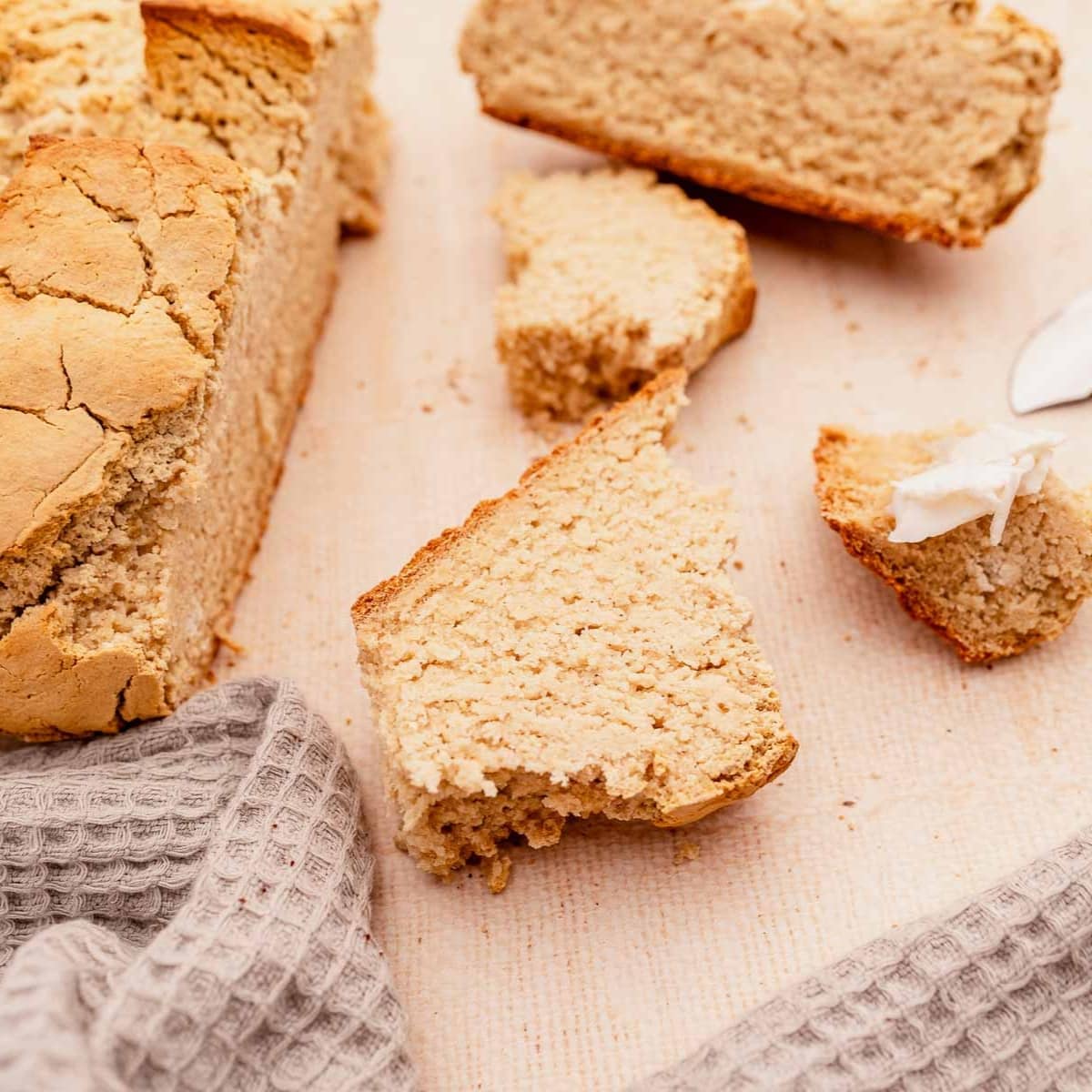
This Gluten-Free Irish Soda Bread recipe marries traditional flavors with modern dietary needs, creating a delicious, crusty loaf that’s perfect with your favorite meals or enjoyed on its own. Whether you’re avoiding gluten for health reasons or simply looking to try something new, this bread is sure to impress with its easy preparation and absolutely delicious and comforting taste.
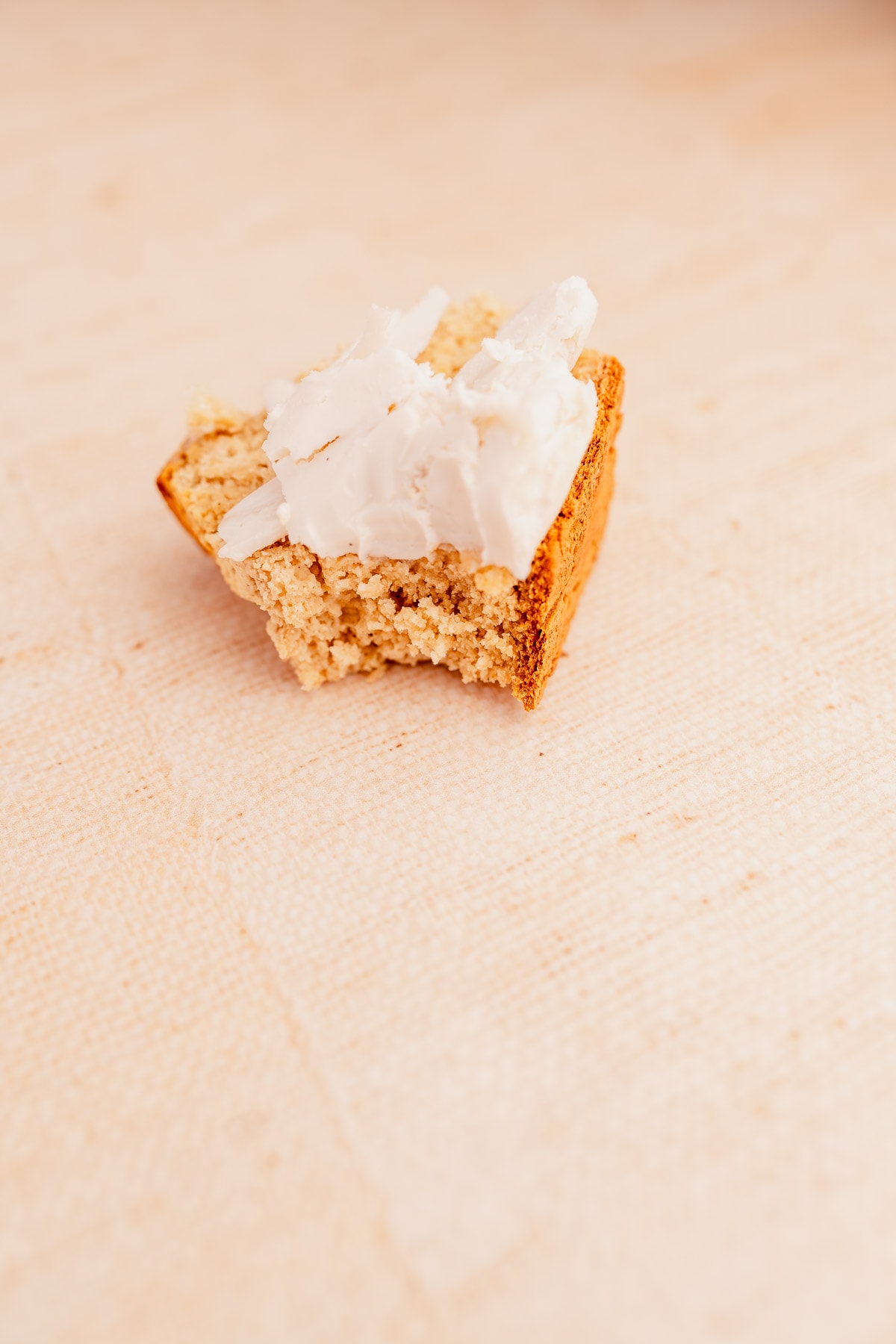
What is Irish Soda Bread?
Irish Soda Bread is a cherished traditional bread from Ireland, celebrated for its simplicity and delightful flavor. Traditionally made with just flour, baking soda, salt, and buttermilk, this bread is uniquely leavened with baking soda, offering a quick and easy preparation. It features a dense, soft interior with a tangy taste and a crunchy crust, often marked with a cross for even baking and cultural significance. Versatile and comforting, Irish Soda Bread can be enjoyed with butter, dipped into soups, or enriched with raisins and nuts, making it a beloved staple that brings a taste of Irish warmth and hospitality to any table.
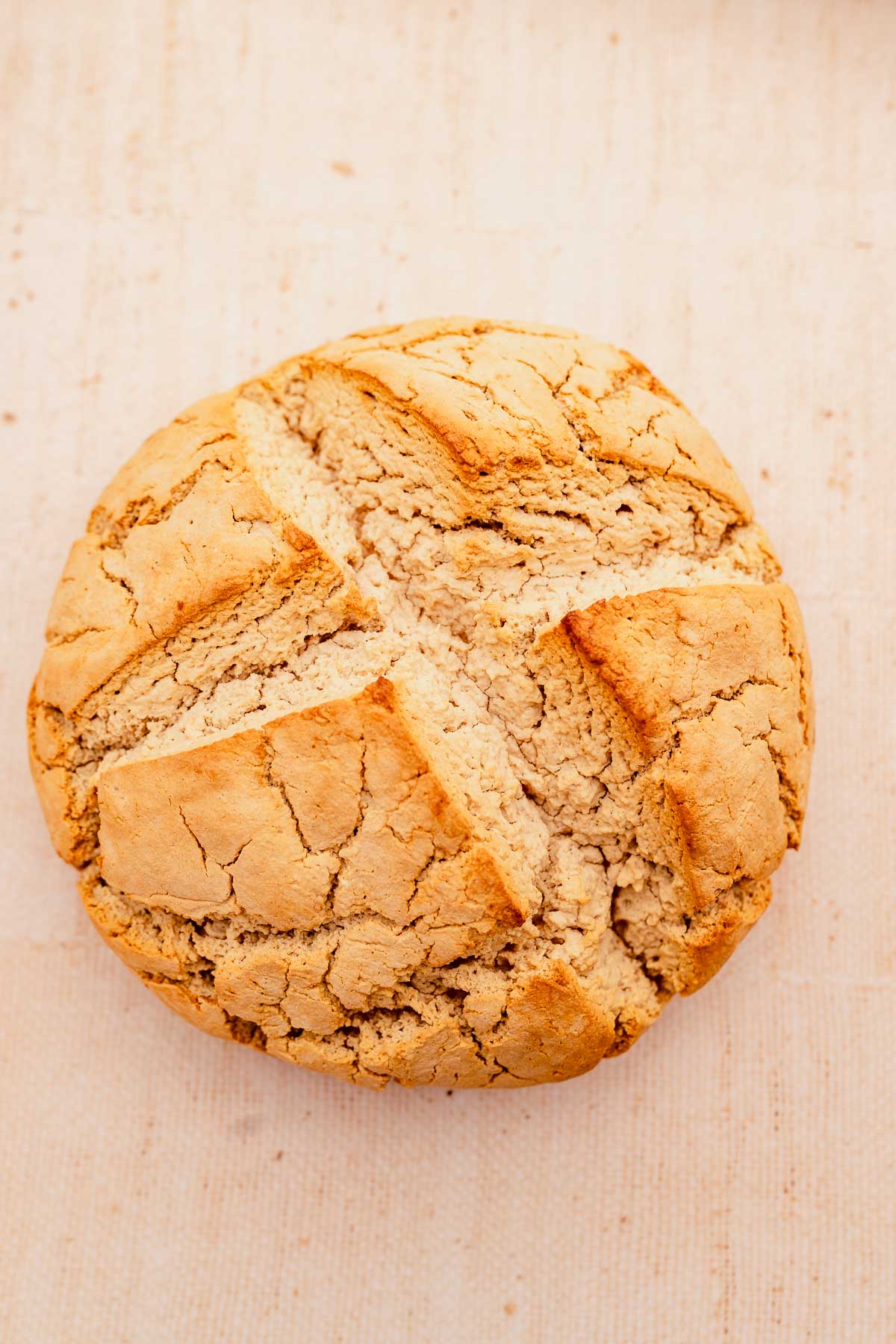
Why You Will Love This Recipe
- Easy to Make: With no yeast or proofing required, this bread comes together quickly and easily.
- Just 5 Ingredients: That’s right! All you’ll need is gluten-free flour, baking soda, salt, milk, and apple cider vinegar.
- Gluten-Free: Perfect for those with gluten sensitivities or celiac disease, thanks to the gluten-free all-purpose flour blend.
- Vegan: You can use any milk of choice, such as oat milk, making it adaptable to dairy-free diets as well.
- Goes With Everything: Serve it with stews, soups, or on its own with a dab of vegan butter.
- Delicious Texture and Taste: The apple cider vinegar helps to create a lovely texture and slight tang, mimicking traditional Irish soda bread.
- No Special Equipment Needed: All you need is one bowl, a baking sheet, and an oven.
- Customizable: Feel free to add raisins, caraway seeds, or other mix-ins to suit your taste.
- Perfect for Any Occasion: Whether it’s St. Patrick’s Day or a cozy weeknight dinner, this bread fits right in.
- Allergy-Friendly: Free from the most common allergens, it’s a safe and delicious option for everyone to enjoy.
Ingredients and Substitutes
Gluten-Free All-Purpose Flour: The backbone of this recipe, a good quality gluten-free all-purpose flour blend that includes xanthan gum, ensures the bread has the right structure and texture. Xanthan gum acts as a binder, replacing the gluten found in traditional wheat flour. If a gluten-free all-purpose flour blend without xanthan gum is all you have, you’ll need to add xanthan gum separately to achieve the desired texture. The general rule is to add 1/4 teaspoon per cup of flour, so this recipe will need 3/4 teaspoon.
Baking Soda: Acting as the leavening agent, baking soda helps the bread rise without the need for yeast. It reacts with the acid in vinegar, creating bubbles that make the bread light and airy.
Salt: Salt is essential for flavor. It balances the flavors and enhances the overall taste of the bread.
Milk: You can use any milk you prefer, dairy or non-dairy, with oat milk being my preferred choice for its mild flavor and creamy texture. It contributes to the bread’s moisture.
Apple Cider Vinegar: The acid in vinegar reacts with baking soda, helping the bread rise. It also adds a slight tanginess, reminiscent of traditional buttermilk used in Irish soda bread. If you don’t have apple cider vinegar, white vinegar works just as well.
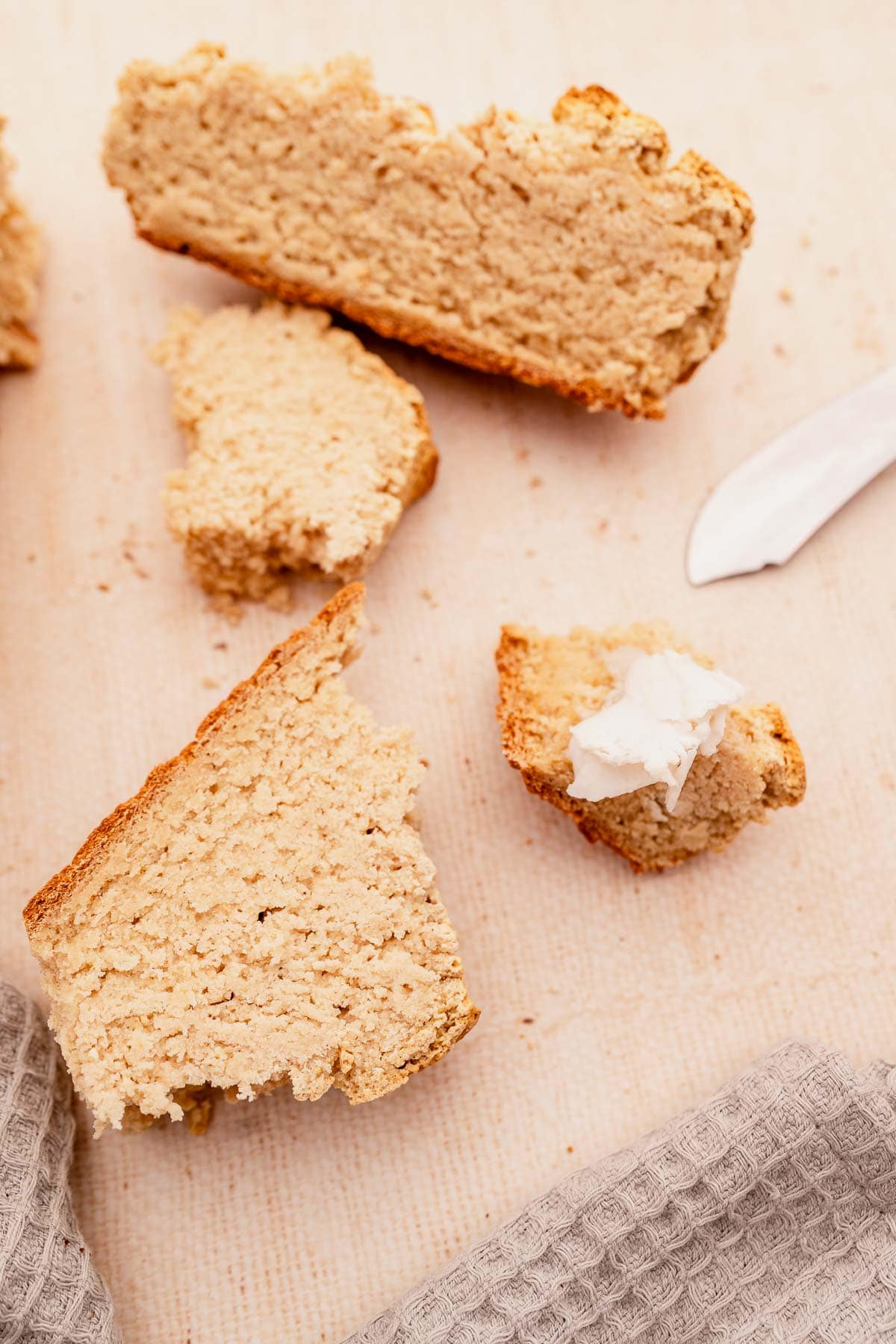
How to Make Gluten-Free Irish Soda Bread
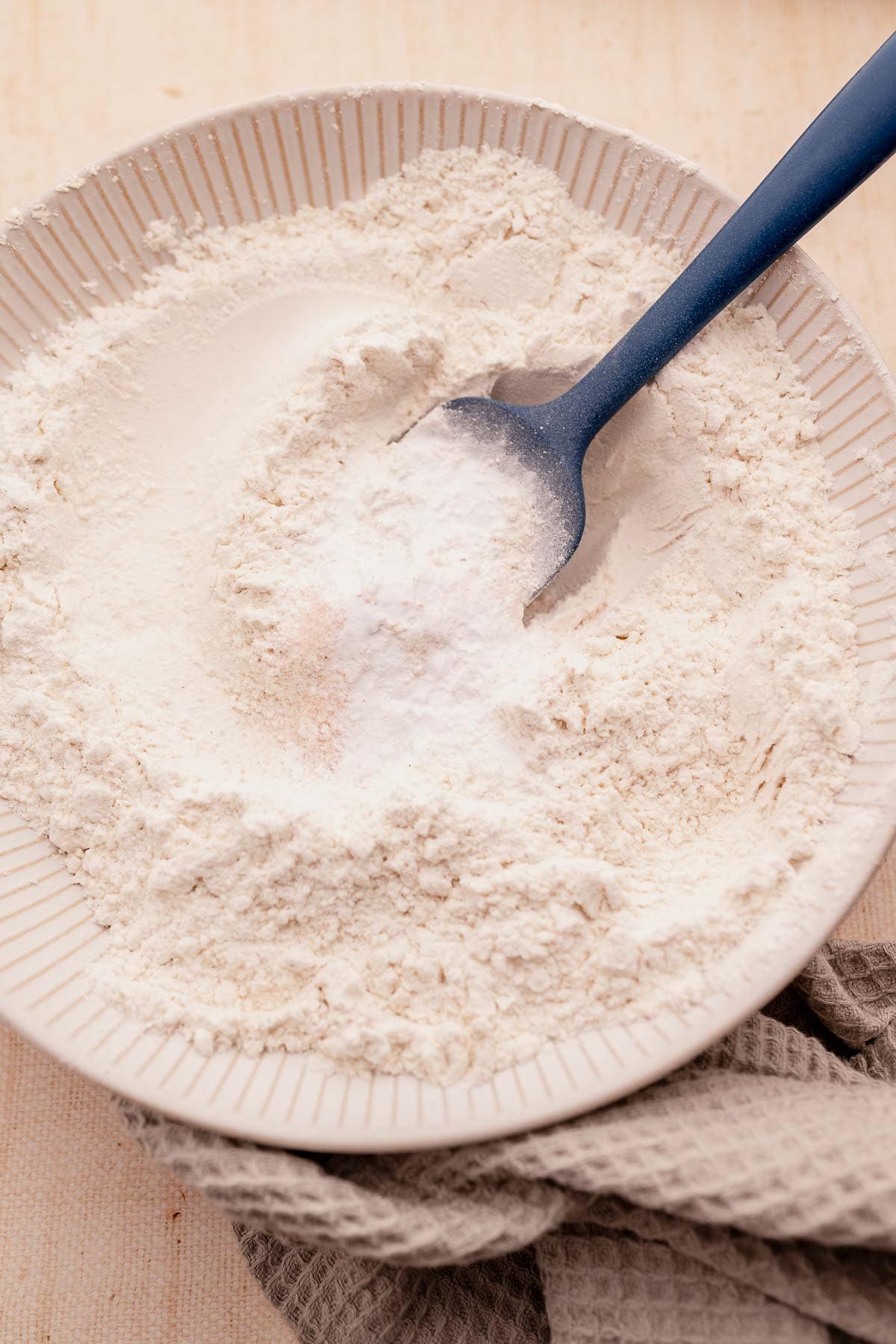
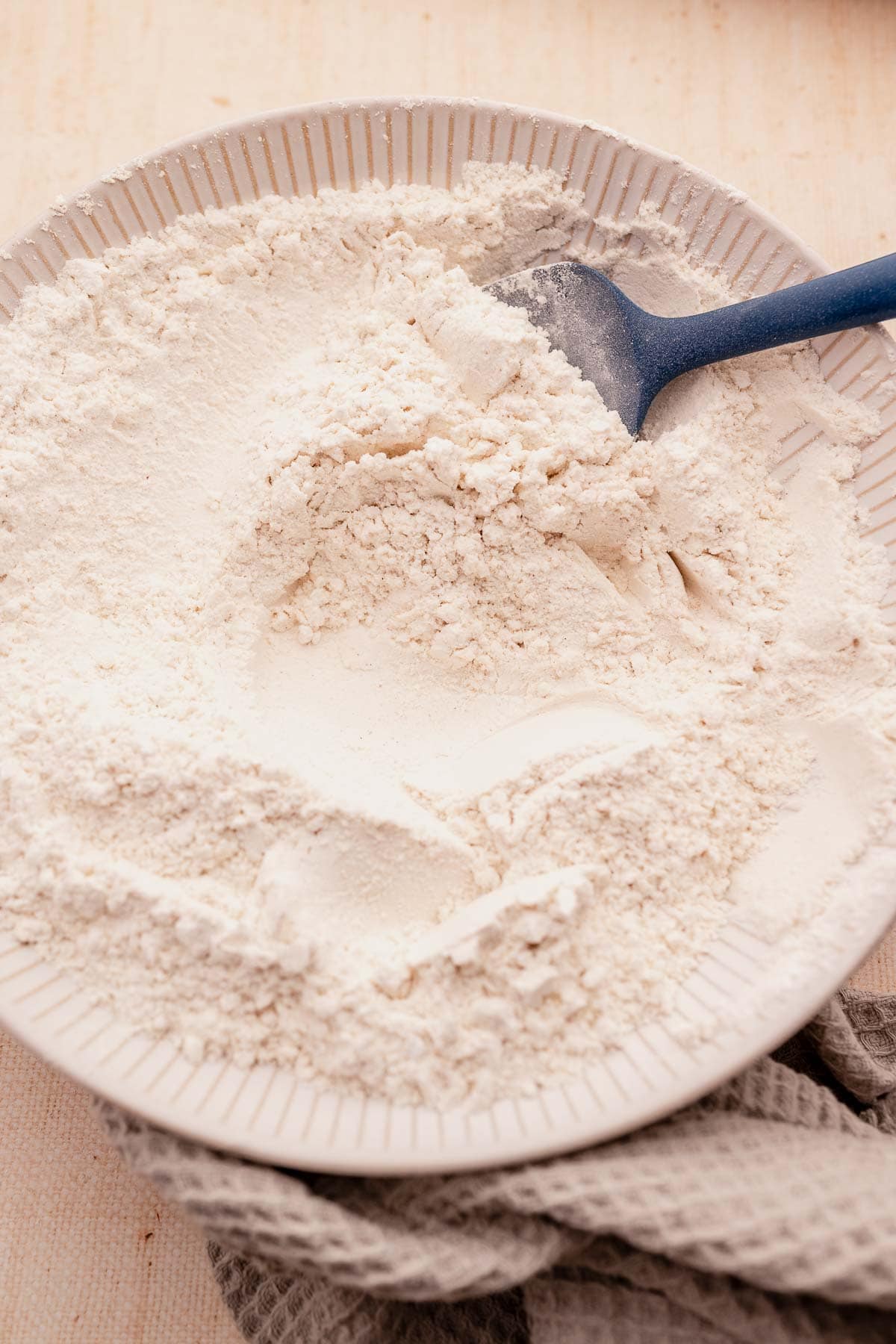
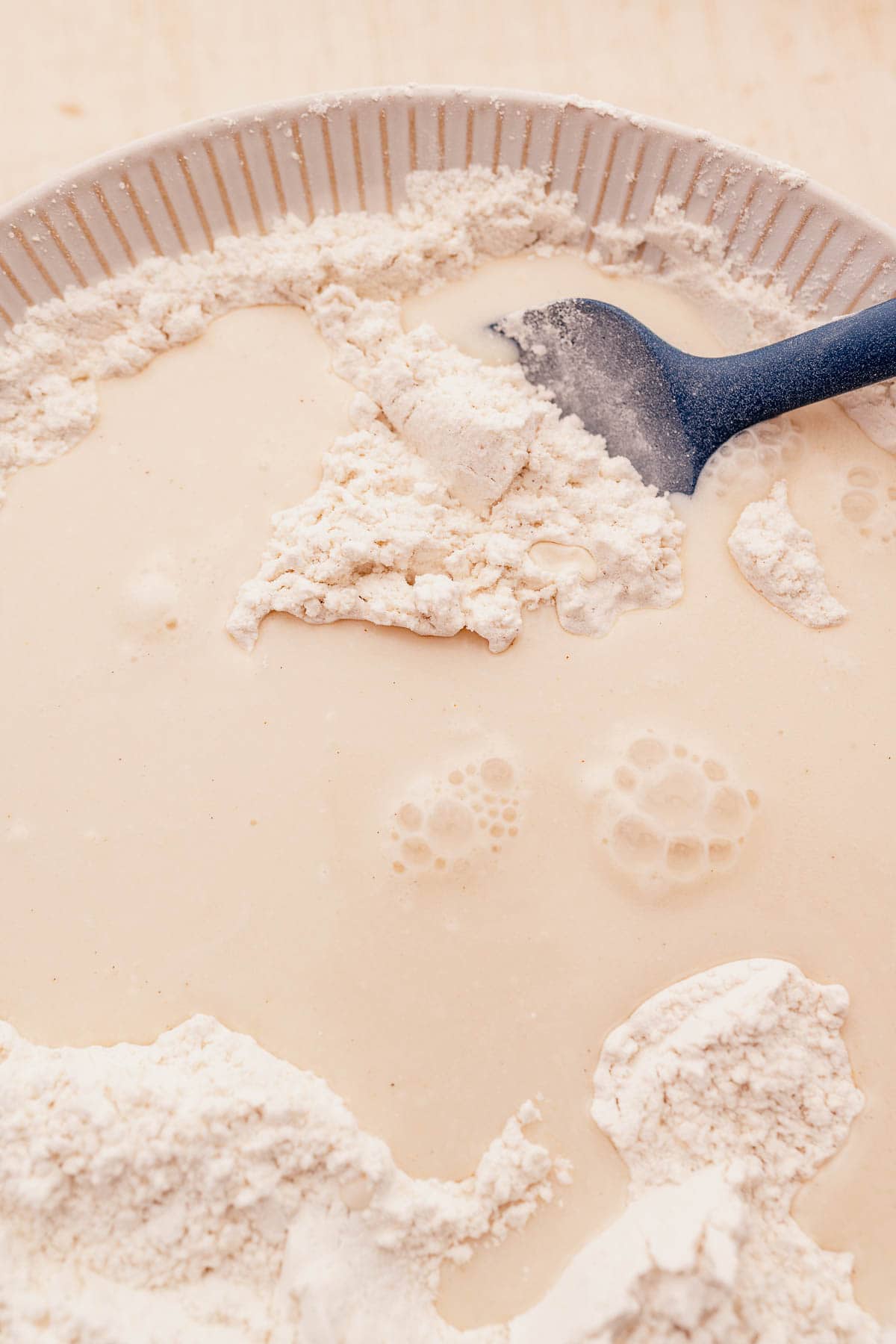
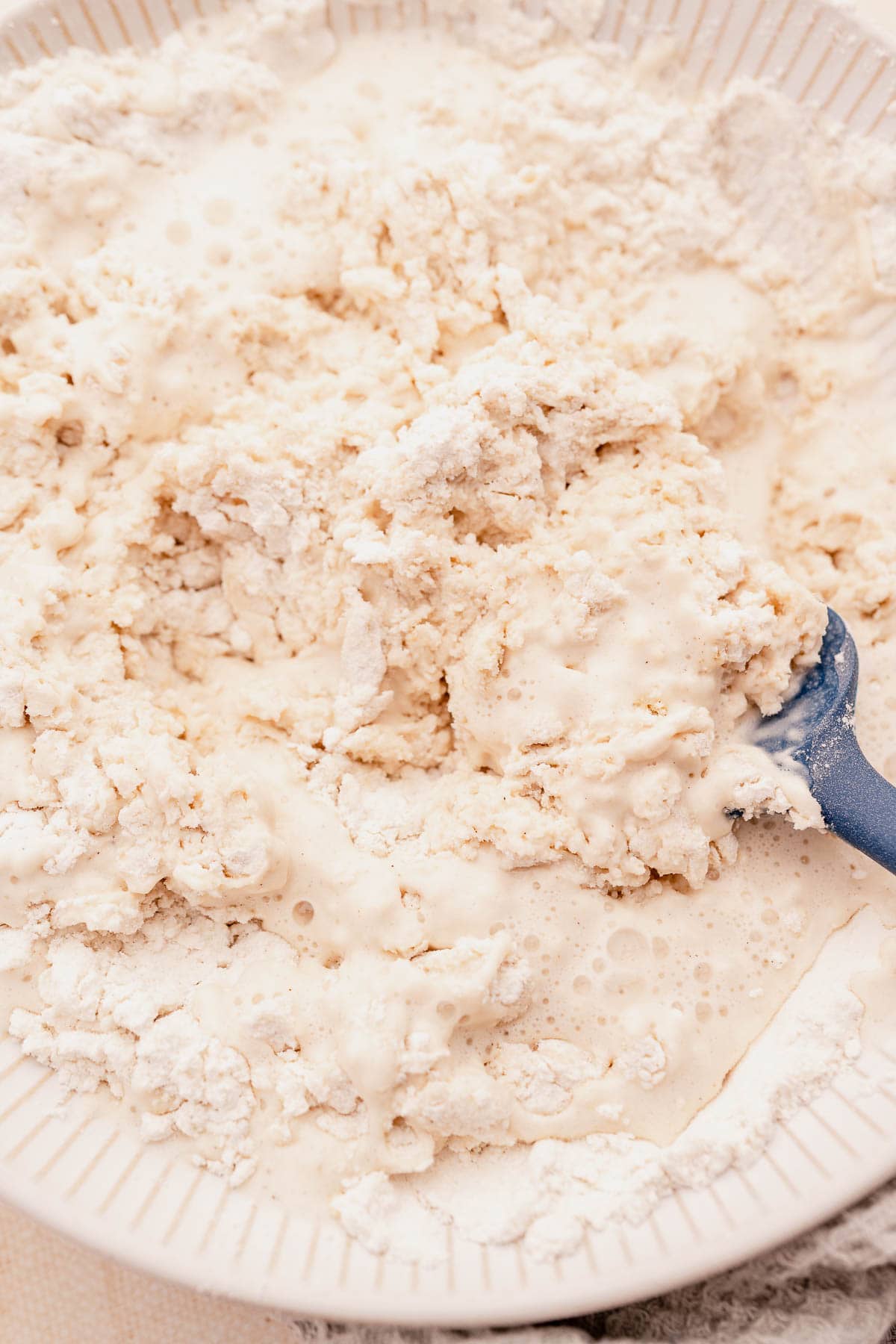
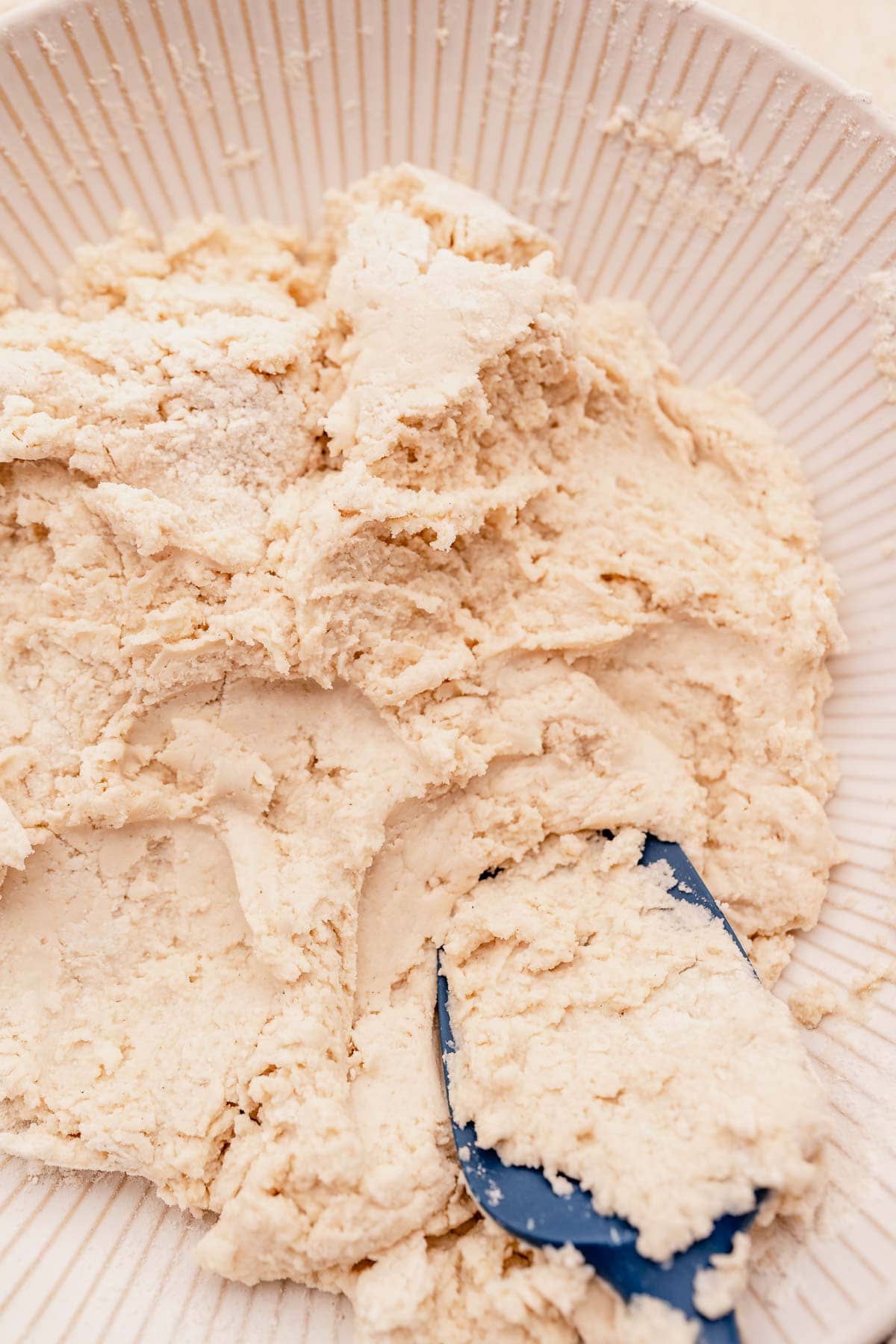
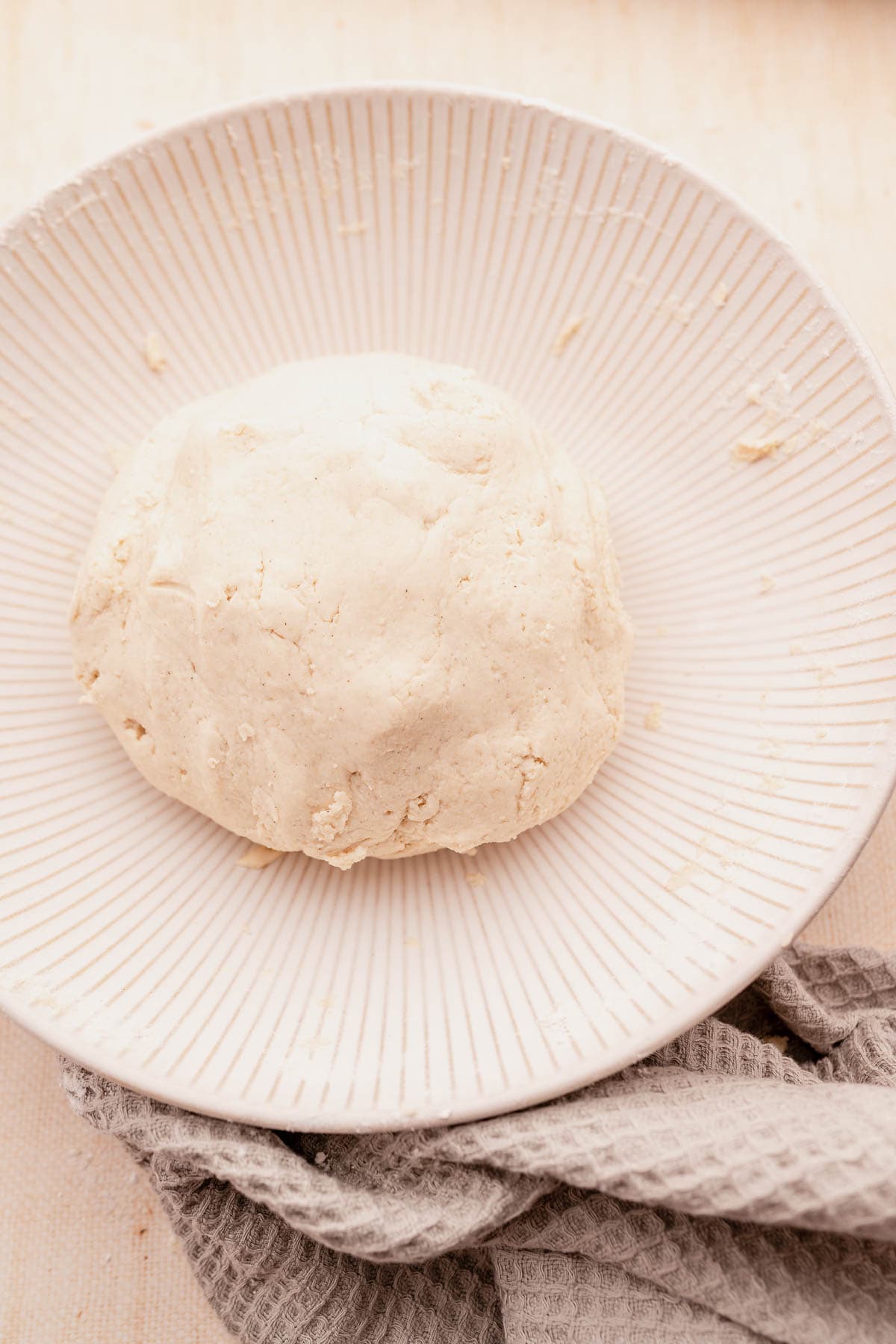
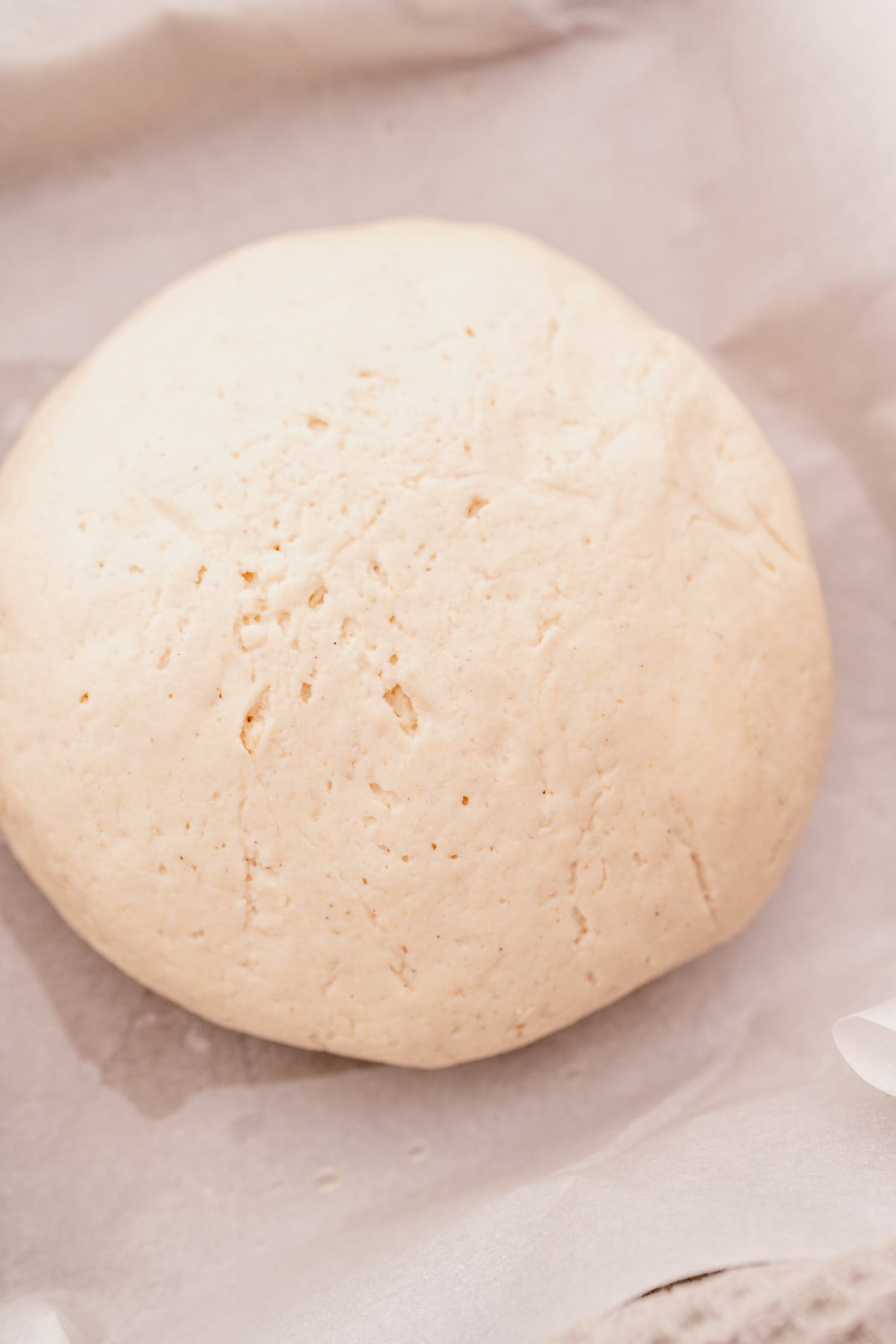
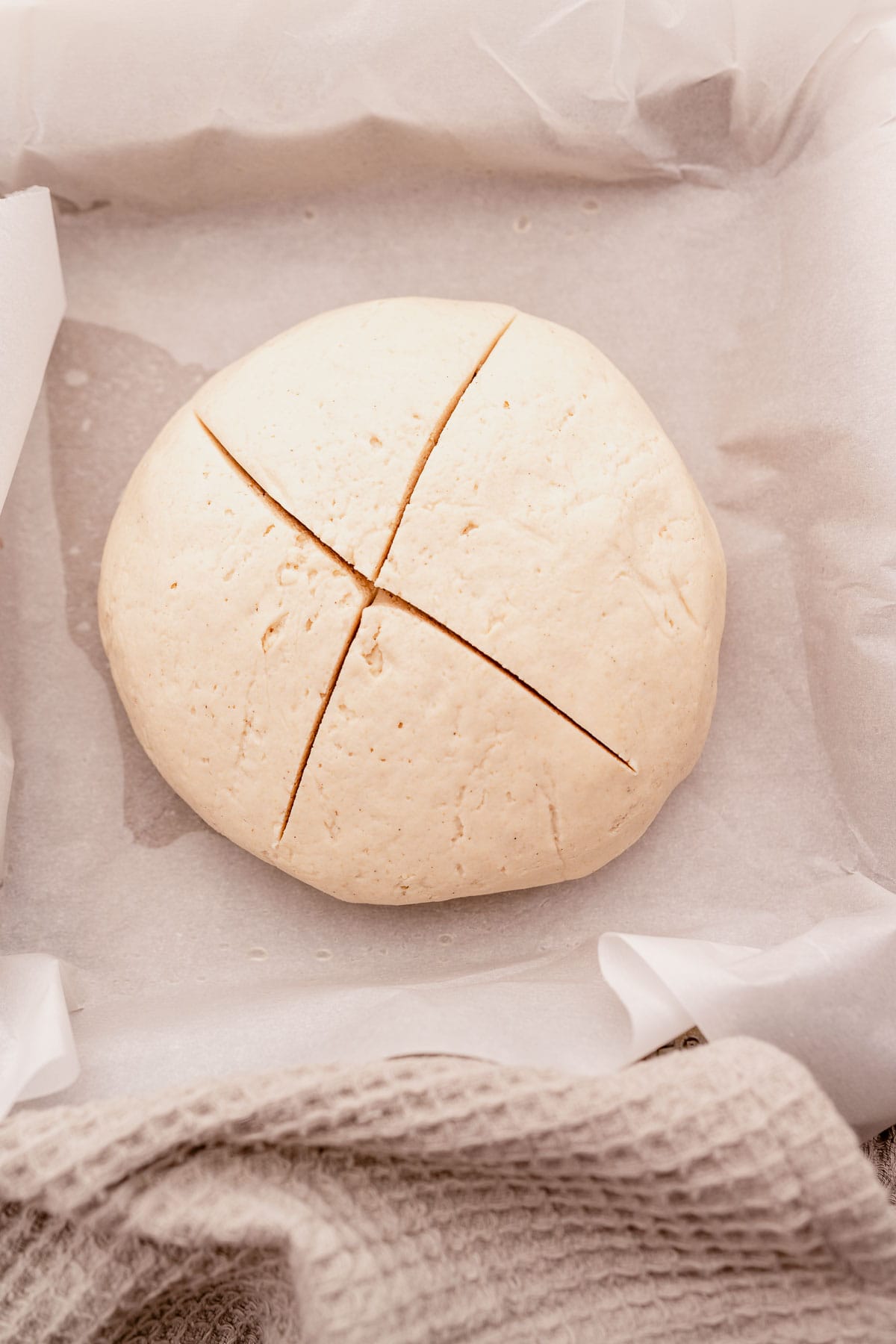
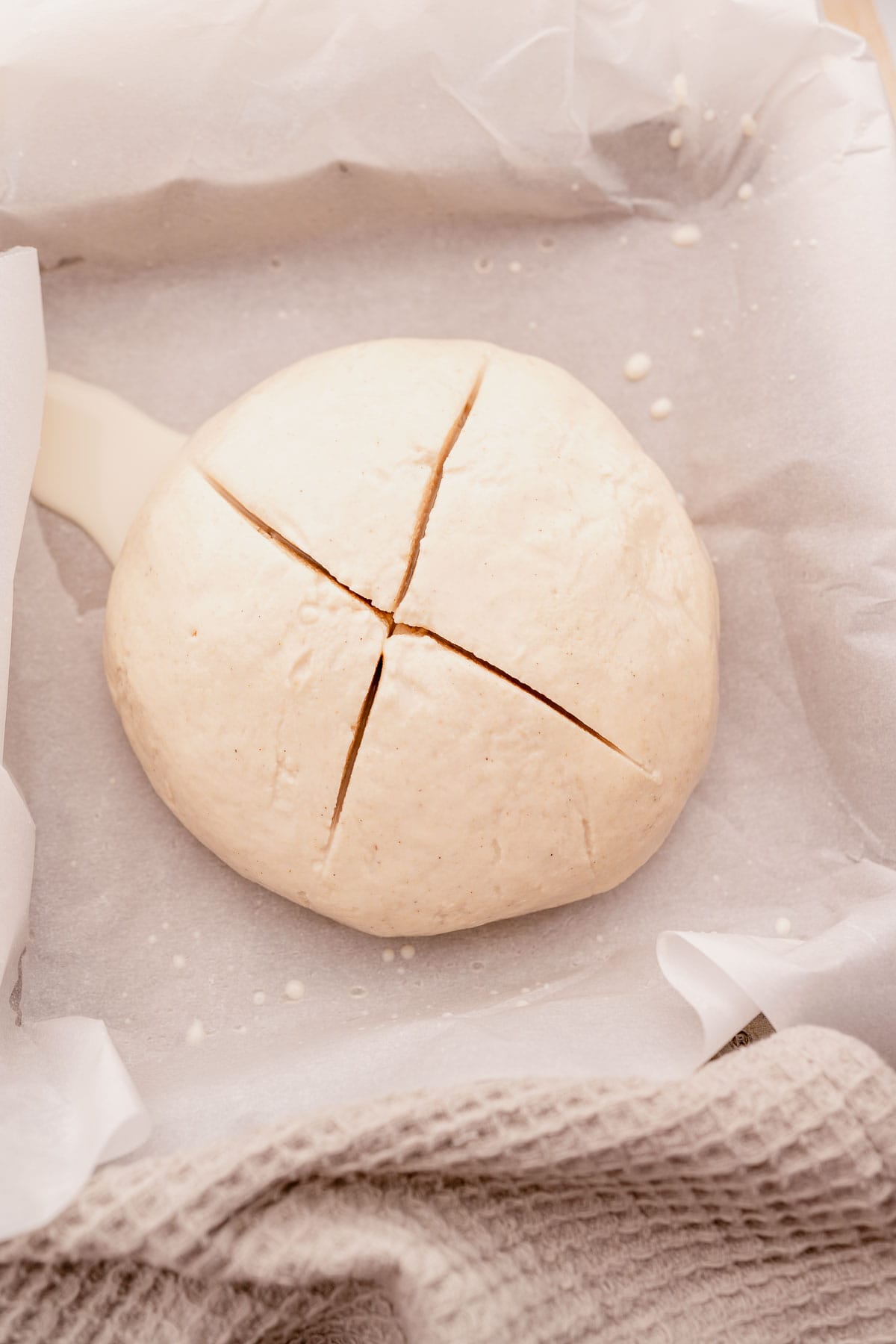
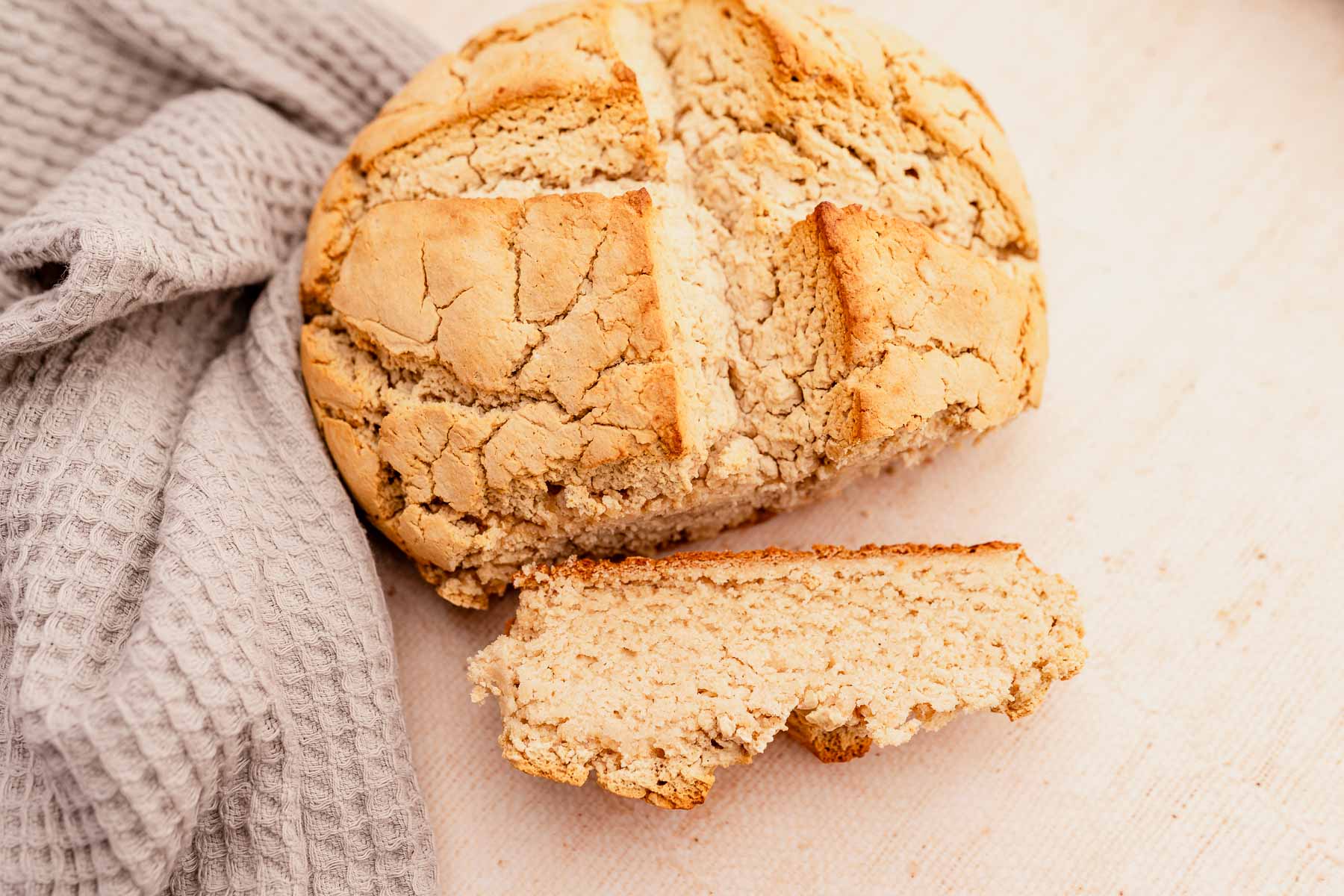
- Start by preheating your oven to 400℉ (200℃) and lining a baking sheet with parchment paper. This ensures your bread won’t stick and allows for easy cleanup.
- In a large bowl, whisk together the gluten-free all-purpose flour blend, baking soda, and salt. This step ensures the leavening agent is evenly distributed throughout the flour for an even rise.
- Pour in your milk of choice and vinegar into the dry mixture. Stir with a spatula until a dough starts to form. The dough will be sticky at first, but as you mix, it will start to come together.
- Lightly flour your hands and knead the dough within the bowl until it becomes smooth and holds together. Gluten-free doughs are more delicate, so handle them with care to avoid tearing.
- Transfer the dough to the prepared baking sheet and shape it into a round loaf, about two inches thick. With a sharp knife, cut a deep “X” into the top. This traditional step helps the bread to cook more evenly.
- Brush the top of the dough with a little extra milk to help create a golden crust. Bake in the preheated oven for about 40 minutes, or until the bread is golden and sounds hollow when tapped on the bottom.
- Let the bread cool on a wire rack for at least 20 minutes before slicing. This resting time helps to set the bread’s structure and makes it easier to cut.
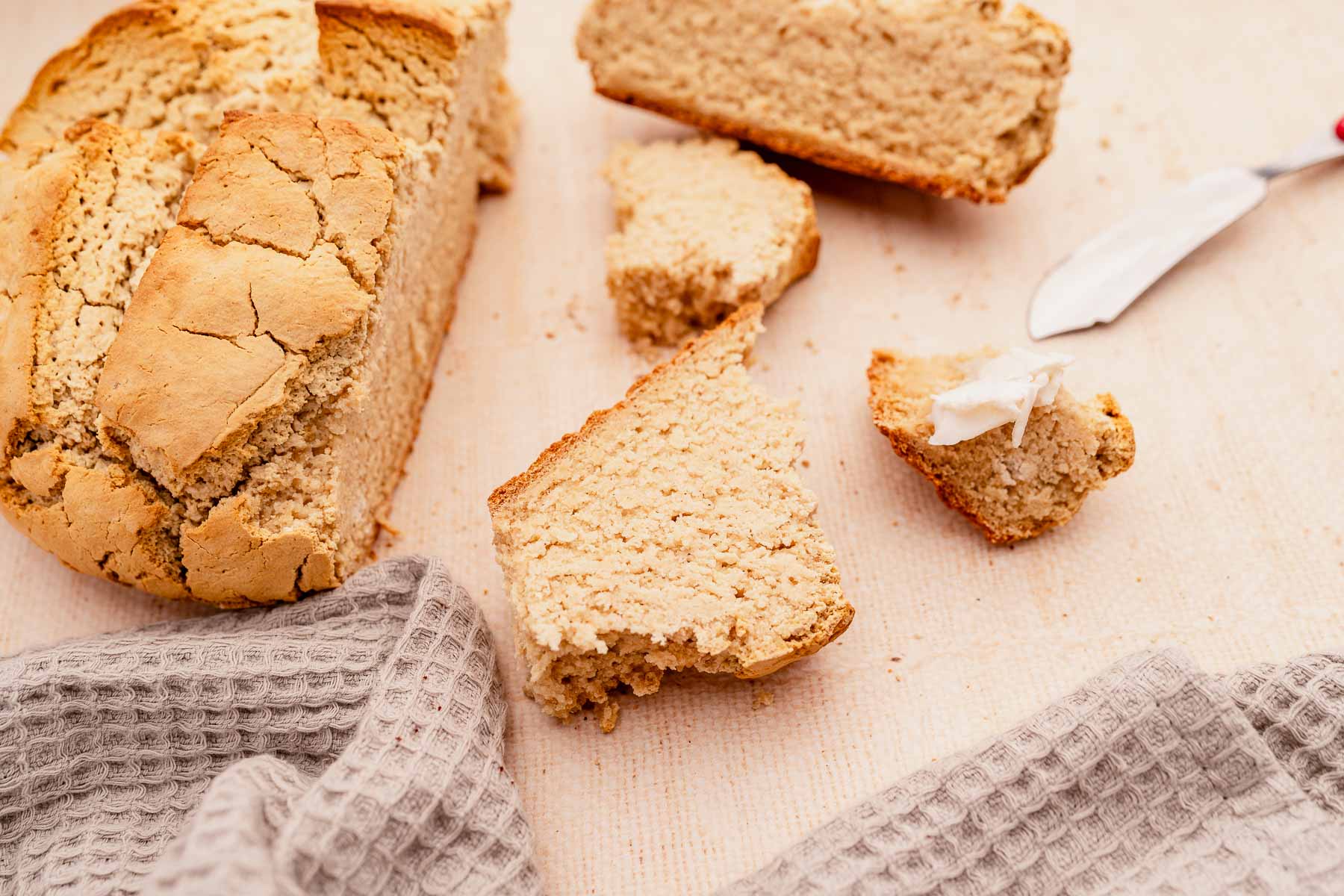
Serving Ideas
Stews and Soups
This gluten-free soda bread is ideal for dipping into rich, hearty stews and warming soups. Its sturdy crust can soak up broths and gravies, making every bite satisfying. Serve it alongside a classic vegetarian stew, a lentil soup, or a creamy chowder to elevate the meal.
Breakfast and Brunch
Toast slices of this bread and top with your favorite spreads for a delightful breakfast or brunch. It pairs wonderfully with butter, jam, or avocado for a healthier option. For a special treat, top with strawberries, maple syrup, and cream cheese for a decadent morning meal.
Cheese Boards
Create an impressive cheese board by including wedges of this soda bread. Its subtle flavors balance the boldness of cheeses, while its gluten-free nature guarantees that everyone can enjoy it.
Something Sweet
For a sweet twist, serve this bread with whipped cream and fresh berries, or drizzle with honey for a simple yet delicious dessert. The bread’s neutral taste makes it a great canvas for sweet toppings.
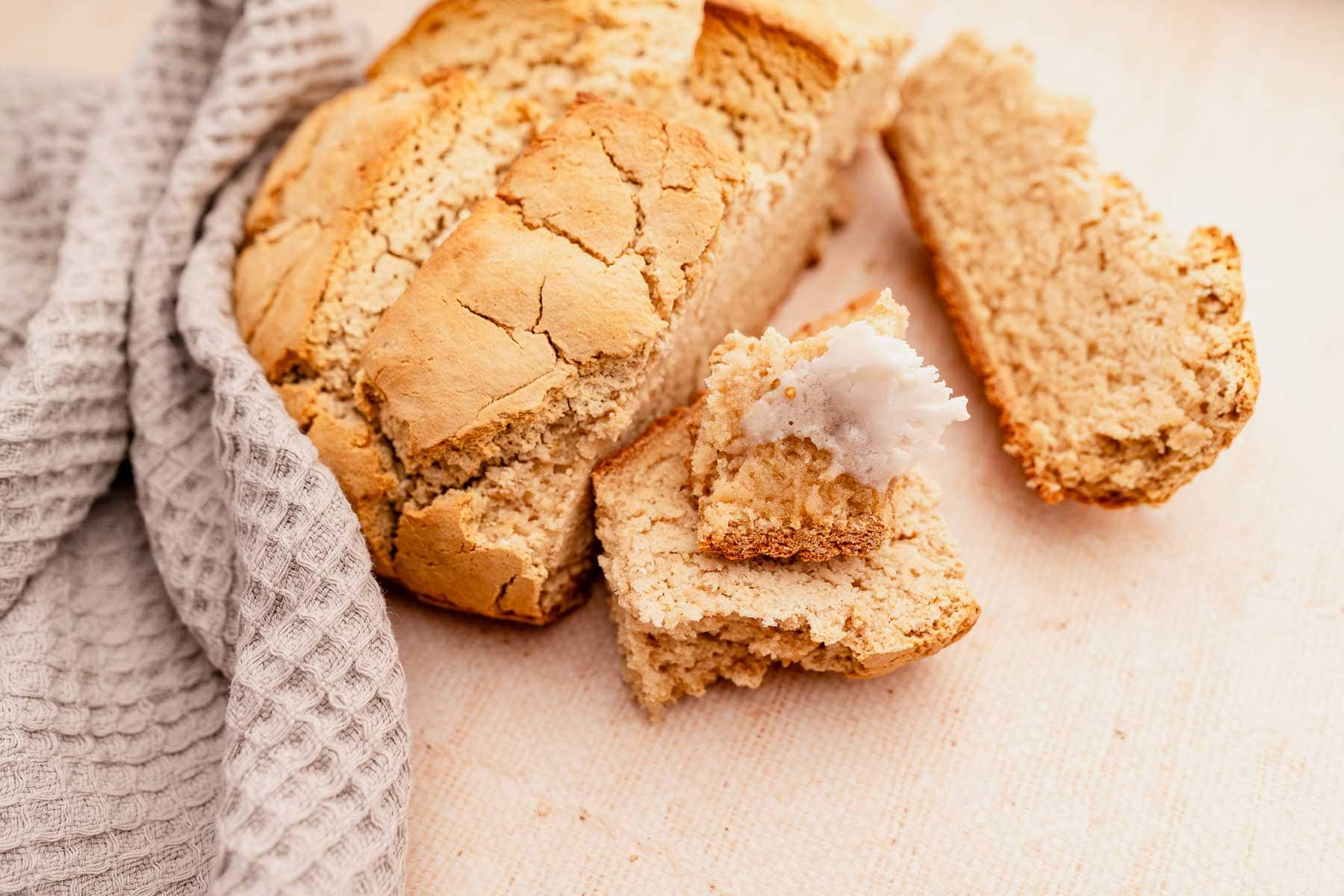
Top Tips
- Gluten-Free Flour Blend: Not all gluten-free flour blends are created equal. Look for a blend that contains xanthan gum, which helps to mimic the texture and elasticity of gluten, providing structure to your bread.
- Don’t Overmix: Mix the dough until just combined. Overmixing can lead to a denser bread because it starts to break down the xanthan gum’s binding properties.
- Knead Gently: Gluten-free dough is more delicate. Knead gently to avoid breaking the dough. If the dough feels too sticky, lightly flour your hands with gluten-free flour.
- Check for Doneness: Gluten-free breads can be tricky to test for doneness. Look for a golden crust and listen for a hollow sound when tapping the bottom of the loaf. An instant-read thermometer should register around 190-200℉ when inserted into the center.
- Altitude Adjustments: If you’re baking at a high altitude, you may need to make adjustments. Higher altitudes often require more flour and less baking soda and liquid. Start with small adjustments until you find the right balance for your location.
- Storage: Before storing, let the bread cool completely to room temperature to prevent condensation inside the packaging, which could lead to sogginess or mold. Then, wrap the bread in plastic wrap or place it in an airtight container, and store the soda bread at room temperature for up to two days.
- Freeze: Wrap the bread or slices in plastic wrap and then place them in a freezer bag. Squeeze out as much air as possible before sealing to prevent freezer burn. Gluten-free Irish soda bread can be frozen for up to 3 months.
- Slice Before Freezing: If you prefer, slice the bread before freezing. This way, you can thaw only what you need, whenever you need it. You can pop it straight into the toaster to thaw or toast.

Frequently Asked Questions
Can I add raisins or nuts to this bread?
Yes, you can add raisins, nuts, or caraway seeds to the dough before baking to customize the flavor.
Is it necessary to use a baking sheet lined with parchment paper?
Lining your baking sheet with parchment paper prevents the bread from sticking and ensures easy removal after baking. However, if you don’t have parchment paper, you can lightly grease the baking sheet.
How do I know if my baking soda is still active?
To test baking soda’s activity, mix 1 teaspoon of baking soda with 2 teaspoons of vinegar. If it bubbles vigorously, it’s still active and good to use.
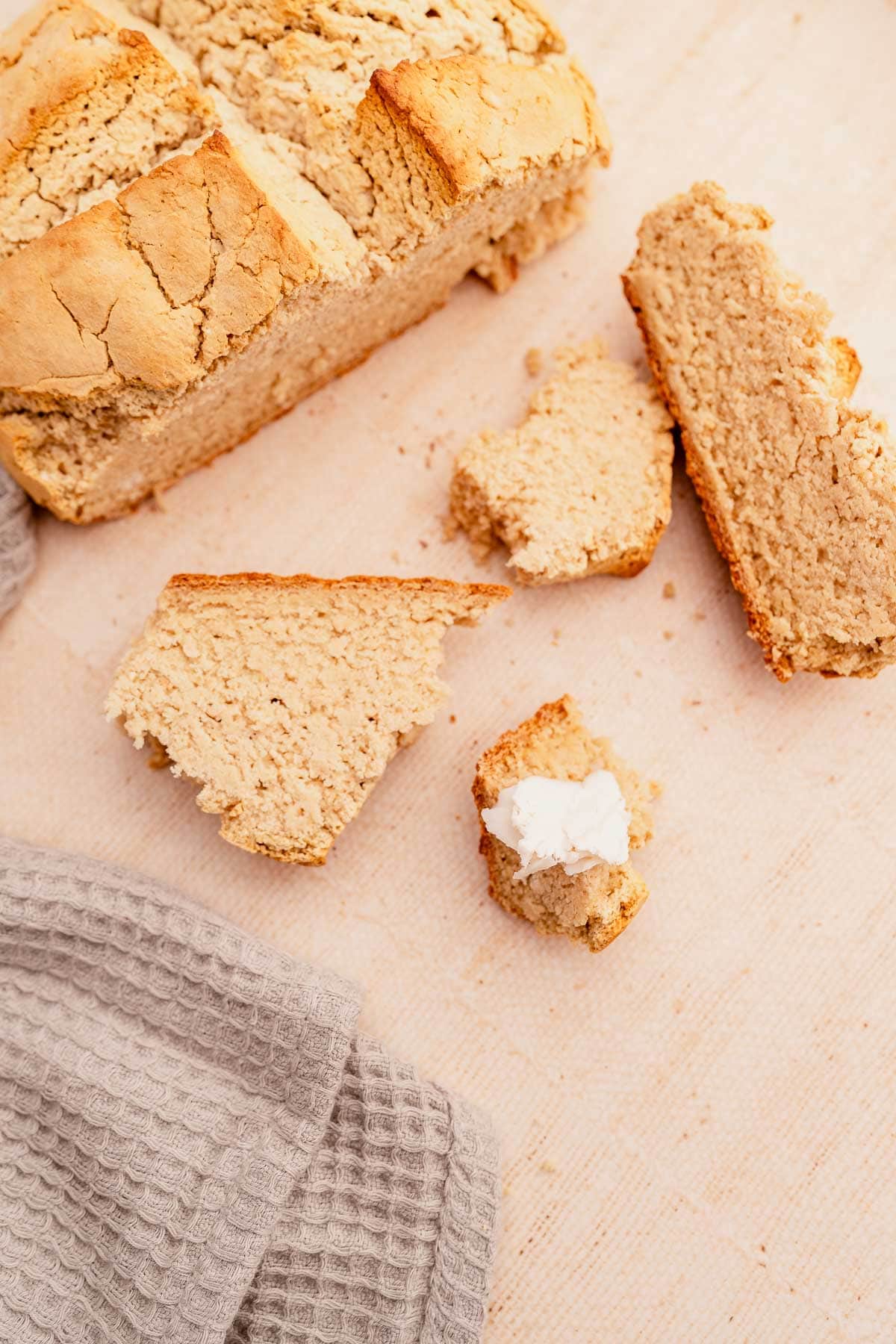
You Might Also Like These Gluten-Free Bread Recipes
Gluten-Free Bannock Bread Recipe
Homemade Gluten-Free Vegan Bread
Flourless Magic Tahini Seed Bread
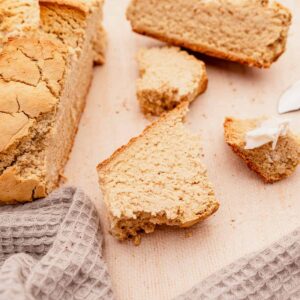
Gluten Free Irish Soda Bread
Ingredients
- 3 cups gluten-free all purpose flour blend with xanthan gum
- 2 teaspoons baking soda
- 1 teaspoon salt
- 1 ½ cups milk of choice I like to use oat milk, plus extra for brushing
- 2 tablespoons apple cider vinegar or white vinegar
Instructions
- Preheat the oven to 400℉. Line a baking sheet or pan with parchment paper and then set it aside.
- In a large mixing bowl, combine the flour, baking soda and salt. Mix well.
- To the dry ingredients, add the milk and vinegar. Mix with a spatula until a ball of dough begins to form.
- Knead the dough with your hands until smooth and uniform.
- Shape the dough into a round about two-inches thick.
- Slice an "X" into the top of the dough round with a knife. Brush the bread with milk and then place it onto the prepared baking pan.
- Bake for 40 minutes or until a firm golden crust forms and the bread sounds hollow when tapped on the bottom.
- Allow the bread to cool for at least 20 minutes before slicing and serving.
- Enjoy!
Notes
- Gluten-Free Flour Blend: Not all gluten-free flour blends are created equal. Look for a blend that contains xanthan gum, which helps to mimic the texture and elasticity of gluten, providing structure to your bread.
- Don’t Overmix: Mix the dough until just combined. Overmixing can lead to a denser bread because it starts to break down the xanthan gum’s binding properties.
- Knead Gently: Gluten-free dough is more delicate. Knead gently to avoid breaking the dough. If the dough feels too sticky, lightly flour your hands with gluten-free flour.
- Check for Doneness: Gluten-free breads can be tricky to test for doneness. Look for a golden crust and listen for a hollow sound when tapping the bottom of the loaf. An instant-read thermometer should register around 190-200℉ when inserted into the center.
- Altitude Adjustments: If you’re baking at a high altitude, you may need to make adjustments. Higher altitudes often require more flour and less baking soda and liquid. Start with small adjustments until you find the right balance for your location.
- Storage: Before storing, let the bread cool completely to room temperature to prevent condensation inside the packaging, which could lead to sogginess or mold. Then, wrap the bread in plastic wrap or place it in an airtight container, and store the soda bread at room temperature for up to two days.
- Freeze: Wrap the bread or slices in plastic wrap and then place them in a freezer bag. Squeeze out as much air as possible before sealing to prevent freezer burn. Gluten-free Irish soda bread can be frozen for up to 3 months.
- Slice Before Freezing: If you prefer, slice the bread before freezing. This way, you can thaw only what you need, whenever you need it. You can pop it straight into the toaster to thaw or toast.
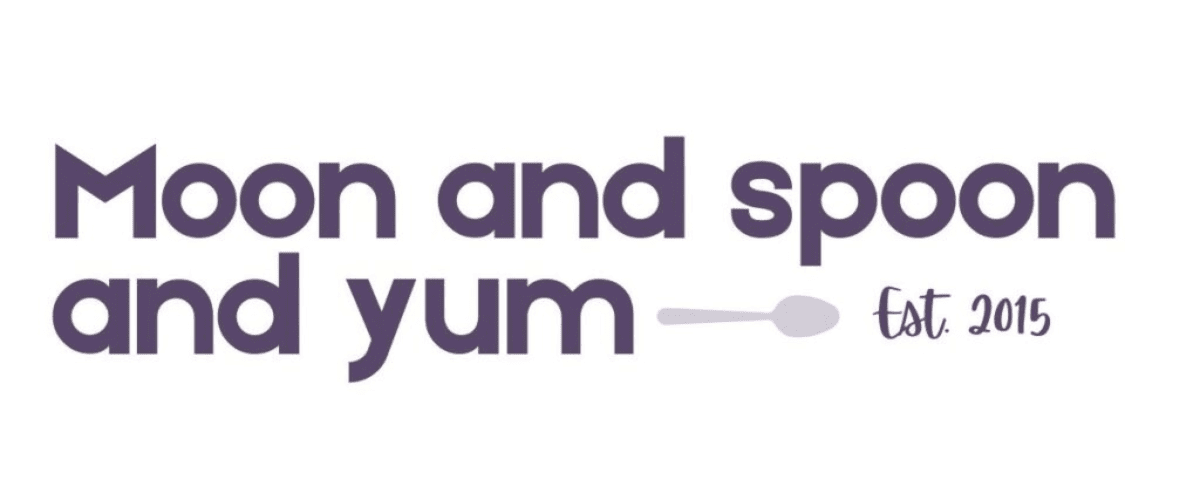



Hi Kristen! The flavor of my bread was very good, however it turned out gummy, any suggestions? I was about a tablespoon short of my GF AP flour blend so I subbed with about a Tbs of tapoica flour (because that’s one of the flours in my blend)…..do you think that could cause the gumminess? It seemed done, the top was lightly browned and I thumped the bottom of it like you suggested! I also used coconut milk (not canned) for the liquid. I hope I can figure out the problem because it is an easy recipe that I know will be incredible!! Thank you! 🙂
Hi, Sandy! So, starches such as tapioca flour can cause gumminess, but usually only in larger amounts than 1 tablespoon, unless the AP flour blend you used is already starch-heavy as it is. Otherwise, if GF bread isn’t fully cooled before slicing, you can often encounter a gumminess that wouldn’t otherwise be there. Also, in some cases, over-mixing a dough made with a flour containing xanthan gum can lead to a denser, gummier bread. I hope this helps troubleshoot! Thank you for stopping by! 🙂
This bread came out so tasty! And it was really easy to make. My kids helped and even did most of it themselves. I’ll be making it again for St. Patrick’s Day for sure!
I followed the tip about not overmixing the dough, and I think it really made a difference. The bread was light and fluffy, not dense at all. I appreciate the tip about altitude adjustments. I live in a high-altitude area, so those adjustments were really helpful.
Nothing beats the taste and smell of fresh homemade bread. That’s why I always insist making all our breads. But I’ve never tried making Irish soda. It is crusty on the outside, soft on the inside and couldn’t believe it only needed five ingredients for this recipe. Amazing!
I love this gluten-free alternative to soda bread! We always made soda bread for St Paddy’s day growing up and this is just as good as the traditional version. Great for soaking up a delicious stew or just toast with butter and jam.
This is the only Irish soda bread recipe I will use. Only change I made was adding raisins. Even my family (which is not gluten-free) loves them.